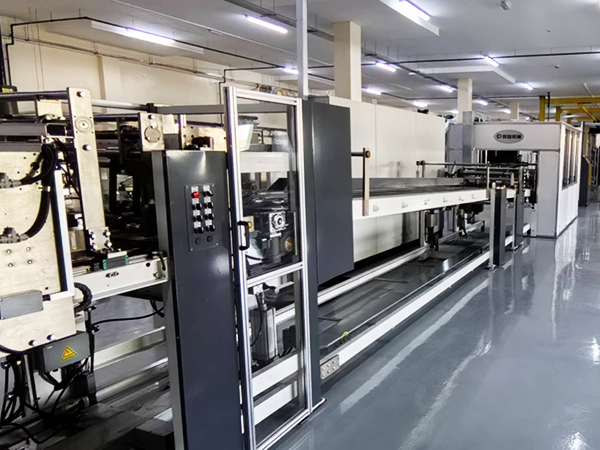Cement Paper Bag Machine: A Comprehensive Guide to Features, Benefits, and Applications
Release time:2025-04-28 Classification:Knowledge
A cement paper bag machine is a specialized industrial equipment designed for the efficient production of durable, eco-friendly paper bags used in packaging cement and other powdered or granular materials. These machines combine precision engineering with automation to deliver high-speed production while maintaining strict quality standards. This article explores the key components, operational advantages, and industry applications of modern cement paper bag machines.

Key Components and Functionality
- Paper Feeding System: Automatically unwinds and feeds kraft paper rolls into the machine, ensuring consistent material supply.
- Forming Unit: Shapes the paper into tubular structures using precision rollers and folding mechanisms.
- Bottom Sealing Mechanism: Applies heat or adhesive to securely seal the bag’s base, critical for heavy-load applications.
- Glue Application System: Utilizes food-grade adhesives or synthetic resins for seam bonding, enhancing durability.
- Printing Integration: Optional units enable logo or text printing directly onto bags for branding compliance.
- Drying and Stacking: Automated conveyor systems dry adhesives before bags are counted and stacked for packaging.
Operational Advantages
- High Efficiency: Capable of producing 30–120 bags per minute, depending on machine configuration.
- Material Optimization: Advanced control systems minimize paper waste through precision cutting.
- Durability Compliance: Produces bags meeting ISO 9001 standards for cement packaging (typically 50–100 kg capacity).
- Energy-Saving Design: Modern models incorporate servo motors and intelligent power management.
- Flexible Customization: Adjustable parameters accommodate varying bag sizes (common range: 40–100 cm in height).
Industry Applications
While primarily designed for cement packaging, these machines also serve:
- Gypsum and lime powder packaging
- Agricultural products (e.g., fertilizers, animal feed)
- Chemical powders and mineral storage
- Recyclable construction material packaging
Selection Criteria
When choosing a cement paper bag machine, consider:
- Production Capacity: Match output (bags/hour) to plant requirements
- Automation Level: Semi-automatic vs. fully automated systems
- Energy Consumption: Evaluate power requirements (typically 15–45 kW)
- Maintenance Needs: Look for self-diagnostic systems and accessible components
- Technical Support: Verify availability of installation and training services
Future Trends
Emerging innovations include:
- AI-powered quality control systems using machine vision
- IoT-enabled predictive maintenance capabilities
- Hybrid machines handling multiple bag materials (paper/PP woven)
- Enhanced safety features meeting CE certification standards
Conclusion
Modern cement paper bag machines represent a critical investment for packaging operations, combining operational reliability with environmental responsibility through recyclable paper materials. Their evolving technology continues to address industry demands for speed, precision, and sustainability, making them indispensable in bulk material handling sectors worldwide.






